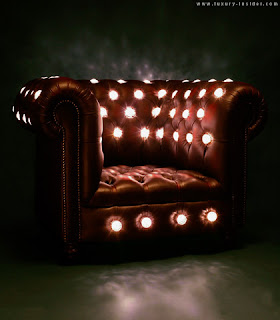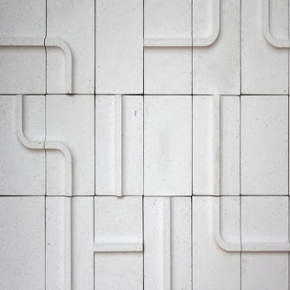We were out and about in the Big Smoke this morning and the Underground of all places gave us some good old fashioned inspiration for today's post. As we were winging our way around town post-rush hour we managed to bag a seat; a good old fashioned moquette covered seat. So we thought we'd do a piece on London Underground's infamous connection with moquette.
Here are a few of our favourite designs from yesteryear.
'Colindale' or 'Leaf ' was designed by Marion Dorn in 1937 and features a stylised leaf pattern. The design was produced for London Passenger Transport Board in several different colourways and was first used on Tube stock in 1938 and it was used on the Northern line in 1939.
The 'Double Diamond' is another pattern in greens and reds used in the late1930s and 1940s. Officially called 'Brent', the fabric was designed by Enid Marx in around 1937.
The 'Chevron' design is a geometric pattern consisting of a light green grid overlaid by diagonal red stripes and checks in the form of a 'chevron', on a dark green background. Designed by Enid Marx in 1938, this moquette was used to re-upholster seats on 1938 Surface Stock trains. On vehicles for the Piccadilly and Central lines it was teamed with red leather arm rests.
'Shield' is a repeating geometric pattern of interlocked diamond and lozenge shapes in red and light green on a dark green background. Again designed by Enid Marx, this time in 1945, it is believed moquette of this pattern was widely used on the refurbished 1938 stock from 1945. It was teamed with green leather armrests on vehicles for the Bakerloo, Northern and District lines.
The 'Roundel' design features a circle with light and dark green sections overlaid with a red roundel motif within another red circle. This is mounted diagonally within a diamond pattern formed from red, light green and dark green lines. Designed by Eddie Chapman in 1947, it is not known exactly what vehicles this moquette was used on. However, it is believed that it may have been used during a refurbishment of 1938 stock Underground trains.
This tartan style fabric was designed by industrial designer Douglas Scott, who was responsible for the interior and exterior styling of the Routemaster bus. The pattern features horizontal bands of maroon, brown and light green pile interspersed with vertical lines of yellow loop pile. It was designed specifically to echo the interior colour scheme of the vehicle: yellow ceilings, red lower sides and green seat backs.
Want to know more ...... well London Transport Museum is holding a "Moquette For London" design evening on Wednesday 22 September 2010. The event will offer an insight into the moquette brand and identity, design legacy and history .......... press
here for details.
Credits/Images: London Transport Museum Shop






























































